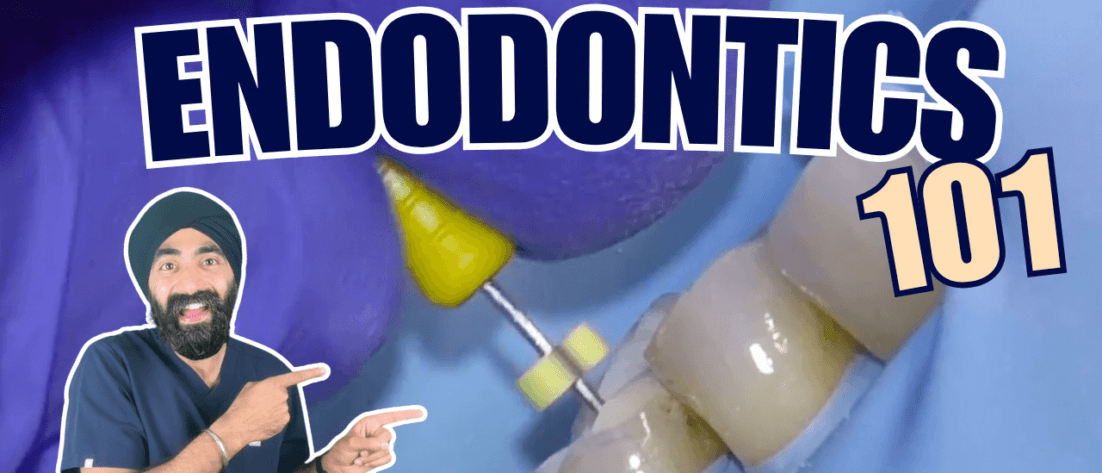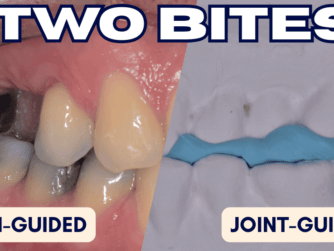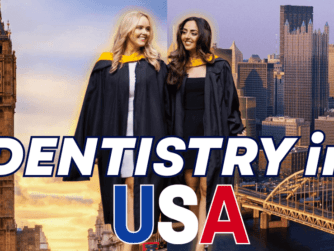Podcast: Play in new window | Download ()
Subscribe: RSS
How can you tell if a root canal treatment is truly successful?
Do you always need cuspal coverage after a root canal?
Are hand files still relevant, or has rotary completely taken over?
And does GP pumping really improve the effectiveness of irrigants like hypochlorite?
Emma returns for another Protrusive Student Series episode as she heads into her final year of dental school. Together, we explore the fundamentals of endodontics – covering restoration choices, success criteria, instrumentation, and irrigation protocols.
This episode breaks down the basics every student and young dentist should understand, while also tackling the common debates and real-world challenges of endo.
Need to Read it? Check out the Full Episode Transcript below!
Key Takeaways
- Understanding the ‘why’ behind dental procedures is crucial for effective practice.
- Both hand files and rotary files have their place in endodontics, especially for beginners.
- Good irrigation techniques are essential for effective endodontic treatment.
- Rubber dam isolation is critical for safe and effective endodontic procedures.
- Learning to determine the master apical file size is a key skill in endodontics.
- The use of EDTA helps in removing the smear layer during root canal treatment.
- Endodontic specialists often use advanced techniques and tools for more efficient treatments.
- Success in endodontics is not just about radiographs, it is sometimes defined by patient comfort and healing.
- Cuspal coverage is often necessary after root canal treatment.
- Patient communication is key to managing expectations.
- Consent forms should be tailored to individual cases.
- Understanding proprioception is important for tooth preservation.
Highlights of this episode:
- 00:00 Teaser
- 00:51 Intro
- 02:50 Emma’s Final Year Reflections
- 04:34 Exploring Specialties
- 07:02 Endodontics: A Student’s Perspective
- 08:15 Rotary vs Hand Files
- 11:45 Step-by-Step Notes for Students
- 14:24 Patency and Recapitulation
- 14:55 Determining Master Apical File Size
- 16:58 Irrigation Protocols and Techniques
- 21:22 Typical Irrigation Protocol
- 23:51 Rubber Dam Importance
- 27:25 Rubber Dam Importance
- 28:21 Role of 17% EDTA
- 28:59 Success Factors in Endodontics
- 29:46 Success Factors in Endodontics
- 30:46 Real-World Endodontic Practices
- and Challenges
- 32:11 Understanding Success and Survival in Root Canal
- 34:26 Successful Outcomes
- 36:24 Success vs Survival
- 38:12 The Debate on Cuspal Coverage and Timing
- 40:48 Proprioception
- 41:54 Pre-Endodontic Build-Up
- 42:29 Direct Cuspal Coverage
- 44:03 Consent and Communication in Endodontic
- 47:25 Conclusion and Future Topics
- 49:02 Outro
Resources mentioned:
- Outcome of primary root canal treatment: systematic review of the literature – Part 1
- Outcome of primary root canal treatment: systematic review of the literature – Part 2. Influence of clinical factors
- Radiographic Assessment of the Quality of Root Canal Fillings
Check out Simple Re-RCT Cases – ‘How To’ Guide – PDP233 for more Endodontic insights
#BreadandButterDentistry #EndoRestorative
This episode is eligible for 0.75 CE credit via the quiz on Protrusive Guidance.
This episode meets GDC Outcome C.
AGD Subject Code: 070 – Endodontics (Endodontic infections, microbiology, and treatment)
Aim: To provide dental students and early-career dentists with a structured understanding of endodontic fundamentals, including instrumentation, irrigation protocols, success factors, and restorative considerations.
Dentists will be able to:
- Differentiate between hand and rotary file systems and identify their advantages and risks.
- Evaluate the factors influencing the success and survival of root canal treatment.
- Recognize when cuspal coverage or pre-endodontic build-ups are required.







